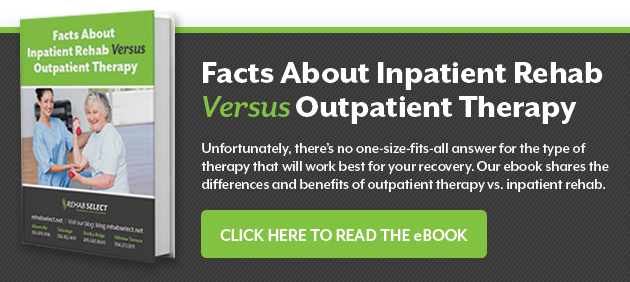 Has your medical care provider suggested a rehab program to help you get back on your feet after a serious illness, injury, or medical event? If so, you’re probably looking to learn a little bit about what these programs can offer you, especially if this will be your first experience with rehab. Here are 2 little known facts – at least among healthcare consumers – about inpatient rehab centers to help you get an idea of what you can expect from inpatient rehabilitative care.
Has your medical care provider suggested a rehab program to help you get back on your feet after a serious illness, injury, or medical event? If so, you’re probably looking to learn a little bit about what these programs can offer you, especially if this will be your first experience with rehab. Here are 2 little known facts – at least among healthcare consumers – about inpatient rehab centers to help you get an idea of what you can expect from inpatient rehabilitative care.
Inpatient Rehab Centers Can Help You Minimize Recovery Time
This is particularly true for people who have complex medical needs, are working to overcome moderate to severe functional deficits, have had a stroke, or are recovering from orthopedic surgeries. Perhaps the most important reason that inpatient rehab centers can often minimize recovery times in these and other types of circumstances, is that they offer a more intensive approach to rehabilitation than can be provided through outpatient or home-based rehabilitation services.
Patients admitted to inpatient rehab centers for their rehabilitative care are assessed and treated by a multidisciplinary team of rehabilitation professionals. That team, which typically includes rehabilitation physicians, medical specialists and nursing staff, physical, occupational and speech therapists, case managers, nutritionists, social workers, nutritionists and others, works with patients and/or families to craft highly personalized treatment plans for each patient. Treatment is intensive and generally includes a minimum of three hours of therapy daily, medical monitoring, medication management, pain management, wound care, nutritional care and counseling, among other services, depending upon the needs of individual patients.
In contrast, patients who receive outpatient or home-based rehabilitation services typically see therapists anywhere from 1 to 3 times per week for sessions that may last an hour or two. Generally, patients who need care from more than one therapist will need to see each separately, and medical care, pain management, and other recovery-related services must be arranged through patients’ personal physicians.
Care from Inpatient Rehab Centers Can Improve Recoveries
The intensive, multidisciplinary care provided by inpatient rehab centers can also lead to greater functional gains and improved health outcomes. This is particularly true for stroke survivors, which is why the American Stroke Association strongly recommends that stroke patients be treated at an inpatient rehabilitation facility whenever possible. Research shows that individuals who have suffered hip fractures or have had knee replacement procedures can also realize greater functional gains through intensive inpatient rehab programs, with patients able to walk further with less pain than those who had less intensive therapy and experience a better quality of life. Early, intensive rehabilitation therapy, as is provided in inpatient rehab centers, has also been shown to improve outcomes for patients with traumatic brain injuries and many other injuries and illnesses.
While these two facts may be fairly well known among medical professionals, they are little known among healthcare consumers. Given the implications that they can have in terms of recovery time and patient outcomes, being aware of them is very important for making solid decisions about rehabilitative care.





